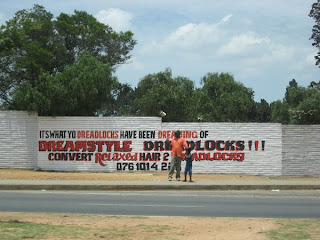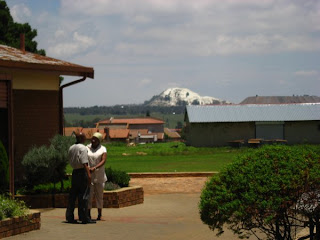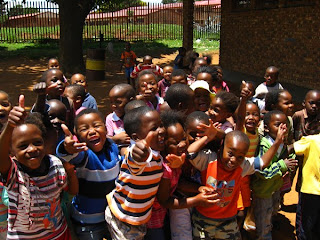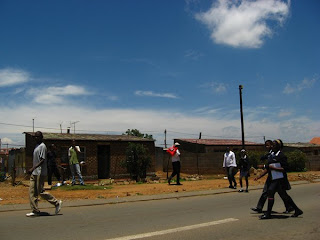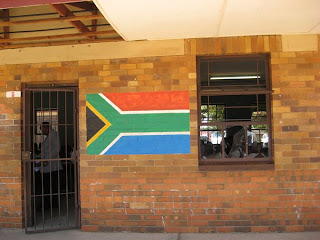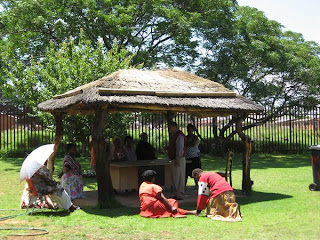




Today I went to Montecasino - yes, Montecasino, Johannesburg - an entirely spurious Italian village housing a real casino and dozens of real restaurants and real shops. The experience is surreal - there are fake pigeons on the balconies, a fake municipio (town hall), a fake campanile (belltower - when the bell chimes the bell rocks a bit to make it look real, but it's actually a recorded broadcast), a piazza surrounded by eateries - and a group of singers churning out famous Italian hits like Funicoli Funicola.
The casino section is roofed over, with a fake Italian sunset on one wall and twinkling stars in another corner. Almost the weirdest part of all this, for me, was that many people prefer to eat inside, in the fake penumbra of a fake Italian evening, rather than sit outside in the healthy South African sunshine. This is presumably partly due to the fact that the indoor air conditioning brings the temperature down by ten degrees (today it was 30 degrees outside; sorry). Disneyland meets plastic Siena. Bizarre. Part of the attraction of these places is that there are vast underground car parks where it' s easy to park (the staff selling tickets greet you with a resounding Buon giorno!), andthere's heavy security at the entrance; once inside you're completely safe, to enjoy your fake Italian meal in a fake Italian setting in a fake climate - then you can wander off to do some slot machines.
Later (this same day) I went to the very wonderful Walter Sisulu botanical garden, where you can inspect hundreds of real exotic South African plants, climb up a real cliff next to a real waterfall, and inspect the real nest of some real Black Eagles - which really do fly down and carry off the real Guinea Fowl innocently pecking around in the real grass on the lower levels. Fake Italy, real South Africa... guess where I saw more people.
(Above: fake Italy; fake storks under a fake sky; real weaver bird nests; real waterfall.)


 This evening I met a man who is so famous in SA he's refered to in the media as just as "Albie" ("like Elvis", as one of his friends said) -
This evening I met a man who is so famous in SA he's refered to in the media as just as "Albie" ("like Elvis", as one of his friends said) - 




